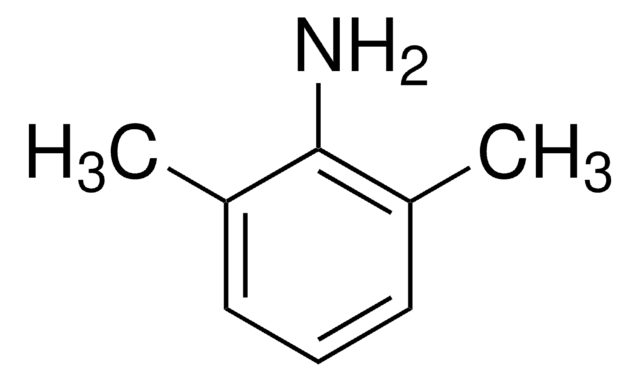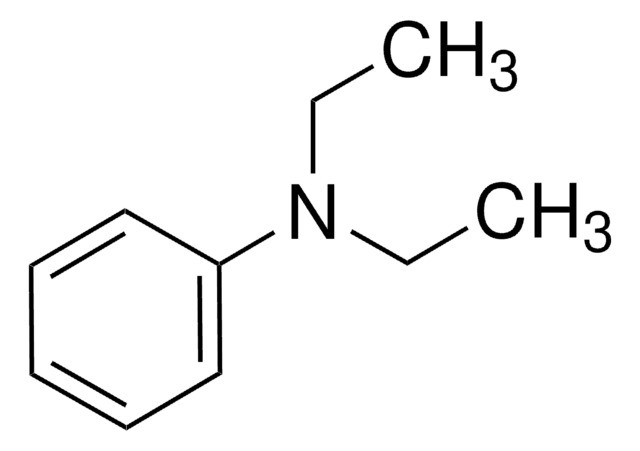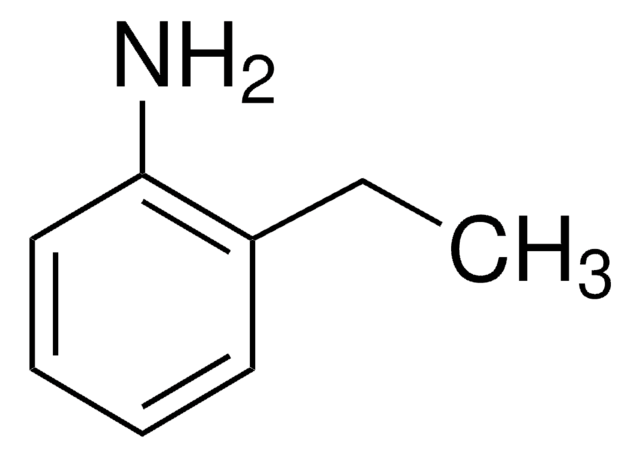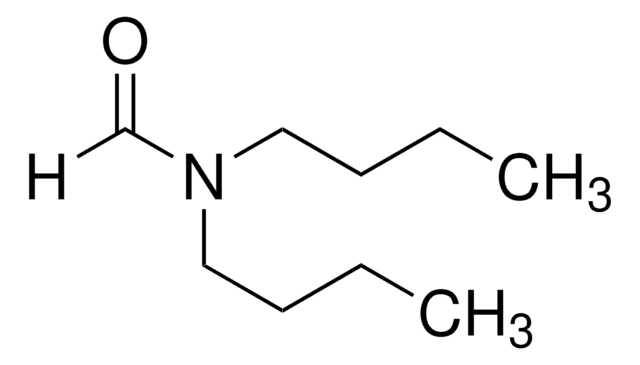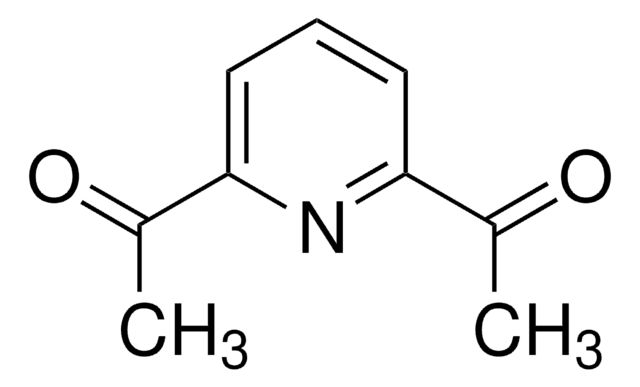추천 제품
vapor pressure
0.02 mmHg ( 20 °C)
분석
98%
refractive index
n20/D 1.545 (lit.)
bp
243 °C (lit.)
density
0.906 g/mL at 25 °C (lit.)
SMILES string
CCc1cccc(CC)c1N
InChI
1S/C10H15N/c1-3-8-6-5-7-9(4-2)10(8)11/h5-7H,3-4,11H2,1-2H3
InChI key
FOYHNROGBXVLLX-UHFFFAOYSA-N
유사한 제품을 찾으십니까? 방문 제품 비교 안내
일반 설명
The 2,6-diethylaniline complexes with iodine, as a sigma-acceptor, were studied spectrophotometrically in chloroform, dichloromethane and carbontetrachloride solutions.
신호어
Warning
유해 및 위험 성명서
예방조치 성명서
Hazard Classifications
Acute Tox. 4 Oral
Storage Class Code
10 - Combustible liquids
WGK
WGK 2
Flash Point (°F)
239.0 °F - closed cup
Flash Point (°C)
115 °C - closed cup
개인 보호 장비
Eyeshields, Faceshields, Gloves, type ABEK (EN14387) respirator filter
이미 열람한 고객
A D Kligerman et al.
Mutation research, 441(1), 95-101 (1999-05-04)
Alachlor is a widely used herbicide for which there is significant human exposure, principally through groundwater contamination and inhalation. Because alachlor is purported to be carcinogenic and mutagenic, we initiated studies to determine if induced cytogenetic damage could be used
S J Logusch et al.
Journal of agricultural and food chemistry, 47(5), 2125-2129 (1999-12-20)
Rat liver tissue homogenates were utilized for in vitro enzymatic conversion of 2,6-diethylaniline (DEA) to the important alachlor metabolite 4-amino-3,5-diethylphenyl sulfate (ADEPS), which was also generated as a radiolabeled standard for use in metabolism studies. ADEPS formation in rodents is
Urinary biomonitoring for alachlor exposure in commercial pesticide applicators by immunoassay.
R E Biagini et al.
Bulletin of environmental contamination and toxicology, 54(2), 245-250 (1995-02-01)
L Durães Sette et al.
Applied microbiology and biotechnology, 64(5), 712-717 (2004-01-17)
Streptomycetes resistant to the herbicide alachlor [2-chloro-2',6'-diethyl- N-(methoxymethyl) acetanilide] were used in degradation assays to characterize the products of alachlor biodegradation. Of six strains tested, Streptomyces sp. LS166, LS177, and LS182 were able to grow at an alachlor concentration of
M Taningher et al.
Toxicology, 85(2-3), 117-122 (1993-12-31)
Alachlor was studied in vivo for its capability to induce DNA damage, as evaluated by the alkaline elution test. The experiments were performed in mouse and rat liver after acute or subacute intraperitoneal or per os administrations of the chemical
자사의 과학자팀은 생명 과학, 재료 과학, 화학 합성, 크로마토그래피, 분석 및 기타 많은 영역을 포함한 모든 과학 분야에 경험이 있습니다..
고객지원팀으로 연락바랍니다.
